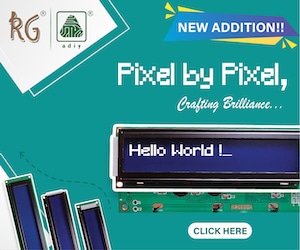Q. Electronic products are consistently improving wrt power efficiency, performance and size. What else goes into the innovation ecosystem?
A. It is not always about lower power, higher performance or smaller size but also the way technology is used. Consider a classic example of the Apple iPhone touchscreen interface. That is sheer innovation because it changed the way we interact with our devices.
At ADI, we do plough back close to 20 per cent of our revenue into research and development. But in-house fundamental research, not considering product development, has declined in big companies over the years. This has been captured by start-ps and also the academia industry partnerships.
I have been based in the Silicon Valley for the last 15 years, which has the advantages of the Stanford and Berkeley universities, serious entrepreneurs who have done multiple startups, proximity to the customers, and most importantly availability of angel investors and venture capitalists. These four things together create a fantastic innovative ecosystem.
Q. Low power, low cost and reliability are the major requirements today. Anything being done at ADI to address these requirements?
A. ADI is concentrating on integration in terms of having the complete analogue signal chain on a single chip or package. We are using a lot of proprietary and industry-standard techniques to conserve power on the analogue as well as the digital side. At the end of the day, we are testing and qualifying our chips not just at the chip level but also at the system level to ensure that the chips perform when customers associate them with their systems.
Q. While developing a product, what major constraints were faced?
A. Today, electronic design constraints are fast processing speeds, capability to handle large volumes of data, high-accuracy measurements, miniaturisation and ultra-low power. We face these constraints and meet customers’ demands by our lower cost and fast time-to-market. The analogue bridge to the digital world is all about interfacing continuously between the analogue and the digital worlds, which, in turn, calls for more integration and faster response times.
The three basic things that the market is looking for are high performance, ultra-low power, and high integration in a smaller form factor.
From an industry and Analog Device perspective, we are developing more ASSPs (Application Specific Standard Product) for target markets. In many cases, we are putting in many of the signal chain components like sensors, amplifiers, filters, and converters on a single package.
Q. What challenge excited you the most in the development of automotive electronics?
A. An interesting challenge that we faced recently came from a DSP chip, developed for an automotive application called advanced driver assistance system. This is a pipeline video processor, which receives feeds or multiple frames from the camera, extracts information out of them and intelligently makes some decisions.
The requirement of the customer was incorporation of five applications—collision-avoidance system, lane departure system, pedestrian detection or pedestrian proximity detection, beam control, and traffic signal detection—into the chip. These applications could help avoid any major error in judgement by the driver. The challenge essentially was to incorporate all these five applications on a single chip and to ensure that they work simultaneously.
Q. How does Anveshan, your fellowship programme, help budding engineers?
A. Anveshan is a project fellowship programme that we started back in 2010, focused on the university students to enhance their system design expertise. We launched the 2012 version in August. This fellowship gives students an opportunity to realise their dreams. The fundamentals and theories are provided by the universities but actual practical application of system design is not taught at the universities. We provide them guidance and help them in building their system. We started Anveshan to bridge the gap between industries and universities. By pairing the student teams from the universities with mentors from the industries, our overall goal is to increase the level of system design in India.
Q. Is it possible for students from any engineering college to participate?
A. Absolutely. In 2012, we reached out to over 100 universities and colleges all over India. We received more than 200 registrations and over 100 submissions. Currently, we are processing them and the selected ones will be mentored by our industry experts. In the end, we would be choosing three top products for attractive prizes.
Q. Could you talk about the hiring policies of Analog Devices? Do you recruit freshers?
A. Our goal at Analog Devices is to hire the best. ADI does extensive hiring from the universities recruiting freshers as well as lateral hiring from the industry. We visit top universities like IISc, IITs, and so forth. It has also widely been acknowledged by students that ADI’s selection process is pretty stringent and challenging. Lateral hiring happens through multiple sources. We have industry’s leading recruiters working for us and we are also extensively using social-networking platforms like LinkedIn and other referral programs to pick out the right candidates based on the references from our existing employees.










